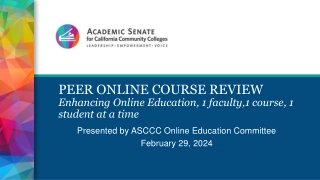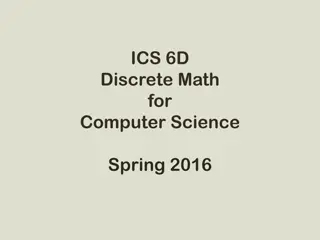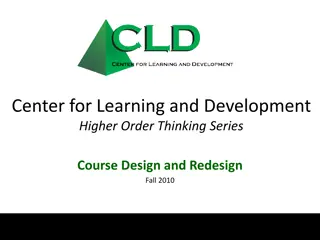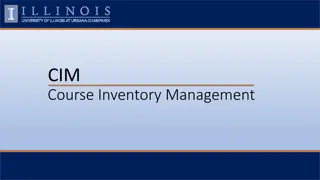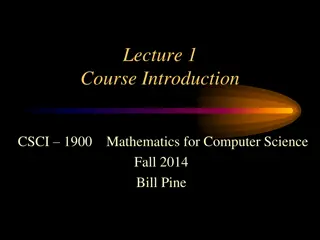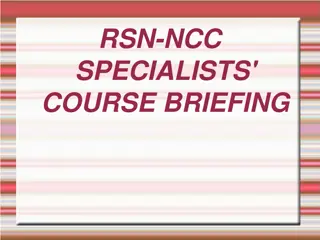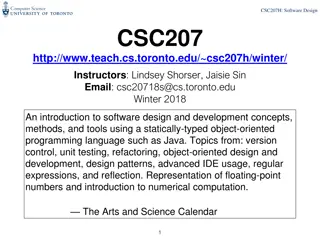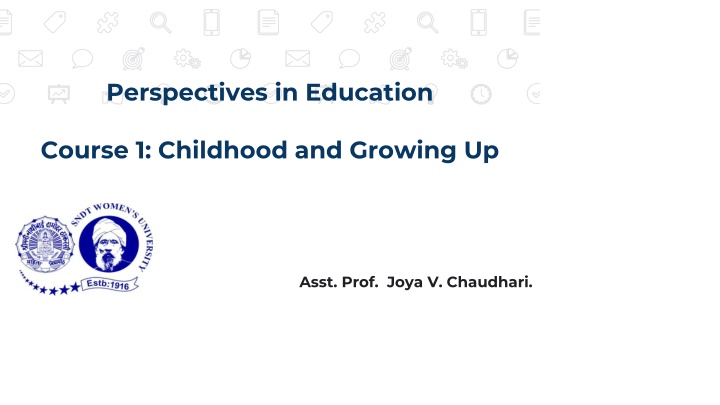
Growth and Development in Education
Explore the concept of growth and development in childhood, covering physical, intellectual, social, and emotional changes from womb to tomb. Learn about the principles of development and characteristics of growth and development as studied by psychologists, providing a foundational understanding for educators.
Download Presentation

Please find below an Image/Link to download the presentation.
The content on the website is provided AS IS for your information and personal use only. It may not be sold, licensed, or shared on other websites without obtaining consent from the author. If you encounter any issues during the download, it is possible that the publisher has removed the file from their server.
You are allowed to download the files provided on this website for personal or commercial use, subject to the condition that they are used lawfully. All files are the property of their respective owners.
The content on the website is provided AS IS for your information and personal use only. It may not be sold, licensed, or shared on other websites without obtaining consent from the author.
E N D
Presentation Transcript
Perspectives in Education Course 1: Childhood and Growing Up Asst. Prof. Joya V. Chaudhari.
Module 1: Learner as a Developing Individual Concept of growth and development and principles of development
Module 1: Learner as a Developing Individual Concept of growth and development and principles of development Growth and development refers to the physical, intellectual, social, emotional changes that occur in the person from womb to tomb. Growth refers to physical changes that occur over time. These include changes in height, weight, fine motor and gross motor skills. These changes are more pronounced during childhood.
Module 1: Learner as a Developing Individual Concept of growth and development and principles of development Development refers to physical changes as well as functional chganges (cognitive, social, emotional, moral, physical and behavioural). These changes are studied and analyzed by different psychologist to understand how people grow and develop over period of time.
Module 1: Learner as a Developing Individual Concept of growth and development and principles of development Definition According to Hurlock, growth is a change in size in proportion, disappearance of old features and acquisition of new one. According to E.B Hurlock, Development means a progressive series of changes that occur in orderly, predictable pattern as a result of maturation and experience.
Module 1: Learner as a Developing Individual Concept of growth and development and principles of development Characteristics of Growth: 1. It is quantitative in nature. 2. It is an intrinsic process. 3. It involves both the changes intrinsic as well as extrinsic. 4. It is measurable. 5. It is observable.
Module 1: Learner as a Developing Individual Concept of growth and development and principles of development Characteristics of development: 1. It is comprehensive in nature. 2. It is a continuous and integrated process. 3. It is quantitative as well as qualitative in nature. 4. Development is the product of both heredity and environment.
Module 1: Learner as a Developing Individual Concept of growth and development and principles of development Characteristics of development: 5. As development is also quantitative therefore, it is related to growth. 6. it is directional and multidimensional. 7. It is individualized and universal. 8. It is influenced by various factors such as biological, environmental and cultural. 9. It is shaped by both nature and nurture.
Principles of development 1. Principle of Continuity - The development follows the principle of continuity which means that development is a continuous process. It starts with pre-natal and ends with death. 2. Principle of Integration - Development thus involves a movement from the whole to parts and from parts to the whole and this way it is the integration of the whole and its parts as well as the specific and general responses.
Principles of development 3. Principle of lack of uniformity in the developmental rate - Development through a continuous process, but does not exhibit steadiness and uniformity in terms of the rate of development in various development of personality or the developmental periods and stages of life. 4. Principle of individual difference 5. Principle of uniformity pattern
Principles of development 6. Principle of proceeding from general to specific 7. Principle of interaction between Heredity and Environment 8. Principle of interrelation- Various aspects or dimensions of one s growth and development are interrelated. 9. Principle of Cephalocaudal- Development from head to foot or toe. 10. Principle of Proximodistal - central body parts to outwards. 11. Principle of predictability - Development is predictable, which means that with the help of the uniformity of pattern and sequence of development.
Stages of Growth and Development in Children 1. Infancy: (From Birth to 2 Years) A child jumps, walk and learn to talk. A child starts learning about simple, social concepts. The body growth is accelerated. 2. Early Childhood (2 6 Years) Infancy features are strengthened. Physical growth occurs like, expansion of muscles, speed in body actions, changes occur in respiration, blood pressure develops etc.
Stages of Growth and Development in Children Language skill is developed and learns new words. New concepts about social relations develop. Memory increases. They ask questions about the environment. Socially he/she develops new friends, and wants social approval of his/her actions. Emotional development starts to develop.
Stages of Growth and Development in Children 3. Later Childhood (6-12 years): Development of concrete operational thinking. Acquisition of basic academic skills (reading, writing, math). Formation of friendships and social groups. Beginning of moral and ethical development.
Stages of Growth and Development in Children 4. Adolescence (12-18 years): Puberty and physical maturation. Cognitive development including abstract thinking. Formation of personal identity and values. Exploration of future career paths and interests. Development of more complex interpersonal relationships.
Stages of Growth and Development in Children 5. Early Adulthood (18-40 years): Establishment of independence and autonomy. Pursuit of higher education and career development. Formation of intimate relationships and families. Exploration of personal and professional goals.
Developmental Influences Development as a resultant of Interactions between individual potential (innate, acquired) and External environment (physical, socio-cultural, ecological, economic and technological). Nature and nurture, Heredity (Nature) and Environment (Nurture) growth and maturation.
Interactions between individual potential (innate, acquired) Innate Potential: Genetic Factors Biological Influences Acquired Potential Social Interactions Environmental Influences Educational Opportunities
Interactions between individual potential (innate, acquired) Interaction Between Innate and Acquired Factors Acquired Potential Gene-Environment Interaction Plasticity and Adaptability
External environment (physical, socio-cultural, ecological, economic and technological). Physical Environment: Geography and Climate Access to Natural Resources Socio-Cultural Environment Cultural Values and Norms Social Institutions Ecological Environment Biodiversity and Ecosystem Services: Biodiversity and Ecosystem Services:
External environment (physical, socio-cultural, ecological, economic and technological). Economic Environment: Economic Systems Global Economic Trends Technological Environment: Technological Advancements Digital Divide Interaction Among Environmental Dimensions: Complex Interconnectedness Adaptation and Resilience
Nature and nurture Nature (Heredity) Genetics and Inherited Traits Biological Foundations Innate Abilities Genetic Variation Nurture (Environment) Environmental Influences Socialization Learning and Experience Environmental Adaptation
Growth and maturation Growth: Definition: Growth generally refers to the physical changes and increase in size of the body. It involves measurable changes in height, weight, and other physical dimensions. Influencing Factors: Nutrition, genetics, hormonal changes, and overall health contribute to the process of growth. The growth process is most rapid during infancy and adolescence.
Growth and maturation Maturation: Definition: Maturation is a broader concept that encompasses not only physical development but also the process of becoming fully functional, capable, and fully developed in various aspects of life. Influencing Factors: While genetics play a role in maturation, environmental factors, experiences, and learning also significantly contribute to the maturation process. Education, social interactions, and exposure to diverse experiences can influence cognitive and emotional maturation.
"Growth and Development of the Brain: Lifelong Impact" "Understanding the Interplay of Brain and Language Development in Teaching Brain Development and Language Development: Interconnected Processes: Brain development and language development are intricately linked, with early experiences shaping neural circuits that impact lifelong language skills.
"Growth and Development of the Brain: Lifelong Impact" Functions of the Brain: Cognitive Functions: Memory, attention, problem-solving. Emotional Functions: Regulation, empathy. Motor Functions: Coordination, movement.
"Growth and Development of the Brain: Lifelong Impact" Windows of Opportunities: Critical Periods: Sensitive periods in early childhood where the brain is highly receptive to stimuli, crucial for optimal learning and development.
"Growth and Development of the Brain: Lifelong Impact" Left Brain and Right Brain Functions: Left Brain: Language processing, logical reasoning, analytical thinking. Right Brain: Spatial abilities, creativity, emotional processing, holistic thinking. Integration of Brain Functions: Holistic Learning: The left and right brain collaborate, emphasizing the importance of integrated thinking for a well-rounded education.
"Growth and Development of the Brain: Lifelong Impact" Practical Applications in Teaching: Strategies: Implement teaching methods that promote language and cognitive development. Balanced Environment: Create a learning environment that caters to both hemispheres.
Concept of 'developmentally appropriate' learning opportunities, getting education for appropriate parenting. Guidelines provided by neuroscience with respect to designing and developing appropriate learning environment.
The concept of "developmentally appropriate" learning opportunities is rooted in the idea that educational experiences should be tailored to the individual needs, abilities, and developmental stages of learners. This concept is particularly crucial in early childhood education and parenting, where understanding the cognitive, emotional, social, and physical development of children is essential for creating effective learning environments.
"developmentally appropriate" learning opportunities 1. Understanding Brain Development: Recognize that the brain undergoes significant development during early childhood. Understand the importance of early experiences in shaping neural connections and brain architecture.
"developmentally appropriate" learning opportunities 2. Sensitive Periods: Acknowledge sensitive periods in development when children are particularly receptive to specific types of learning experiences. Provide activities and stimuli that align with these sensitive periods.
"developmentally appropriate" learning opportunities 3. Individual Differences: Recognize and respect individual differences in learning styles, preferences, and developmental paces. Tailor instruction and parenting strategies to meet the unique needs of each child.
"developmentally appropriate" learning opportunities 4. Emphasis on Play: Understand the critical role of play in fostering cognitive, social, and emotional development. Incorporate play-based activities that are age-appropriate and support learning objectives.
"developmentally appropriate" learning opportunities 5. Responsive Teaching and Parenting: Be responsive to children's cues, needs, and interests. Adjust teaching strategies and parenting approaches based on the child's developmental stage and individual characteristics.
"developmentally appropriate" learning opportunities 6. Holistic Development: Promote holistic development by addressing cognitive, emotional, social, and physical aspects. Provide a well-rounded learning environment that stimulates multiple areas of development.
"developmentally appropriate" learning opportunities 7. Safe and Supportive Environments: Create environments that are physically and emotionally safe. Foster a supportive atmosphere that encourages exploration and risk- taking within appropriate boundaries.
"developmentally appropriate" learning opportunities 8. Cultural Sensitivity: Recognize and appreciate the cultural backgrounds of children and families. Integrate diverse perspectives into learning experiences and parenting practices.
"developmentally appropriate" learning opportunities 9. Continual Observation and Assessment: Regularly observe and assess children's progress and developmental milestones. Use assessment information to inform instructional decisions and parenting strategies.
"developmentally appropriate" learning opportunities 10. Collaboration with Families: Foster strong partnerships with families to ensure continuity between home and educational settings. Involve parents in the learning process and provide resources for understanding child development.
The relationship between development and learning Development and learning are intertwined and often considered reciprocal processes. As individuals learn new information and skills, their cognitive, emotional, and social development is influenced. Similarly, an individual's developmental stage can impact the effectiveness and nature of their learning experiences.
The relationship between development and learning Learner as Imitator: In this role, learners primarily mimic behaviors, actions, or processes demonstrated by others. Teachers should provide clear models and demonstrations for students to imitate. Activities could include role-playing, demonstrations, or guided practice sessions.
The relationship between development and learning Learner as Knower: Here, learners acquire and retain factual information. Teachers can organize activities that focus on memorization, comprehension, and recall. This might involve lectures, readings, quizzes, or mnemonic devices to aid memory retention.
The relationship between development and learning Learner as Thinker: In this role, learners engage in critical thinking, analysis, and problem-solving. Teachers should design activities that encourage inquiry, exploration, and reflection. This could include debates, case studies, experiments, or project-based learning.
The relationship between development and learning Learner as Knowledge Worker: This role involves synthesizing information, applying knowledge in various contexts, and creating new insights. Teachers can facilitate activities that promote creativity, collaboration, and innovation. Examples include group projects, research assignments, or real-world problem-solving tasks.
The relationship between development and learning Learner as Performer: In this role, learners demonstrate mastery of skills or concepts through performance. Teachers should provide opportunities for practice, feedback, and refinement. Activities might include presentations, performances, simulations, or skill-based drills.
Module 2 Dimensions of Learning Erik Erikson's psychosocial stages of development outline the challenges individuals face at different points in their lives. During later childhood and adolescence, the relevant stage is the "Identity vs. Role Confusion" stage, which typically occurs between the ages of 12 and 18 years. This stage is crucial for the development of a stable sense of self and a clear understanding of one's identity.
Module 2 Dimensions of Learning Identity vs. Role Confusion (Adolescence): Central Conflict: Adolescents strive to form a coherent self-identity by exploring different roles, values, and beliefs. Positive Outcome: Successful resolution leads to a strong sense of identity and the ability to make long-term commitments. Negative Outcome: Unresolved conflict may result in role confusion, indecisiveness, and a weak sense of self.

